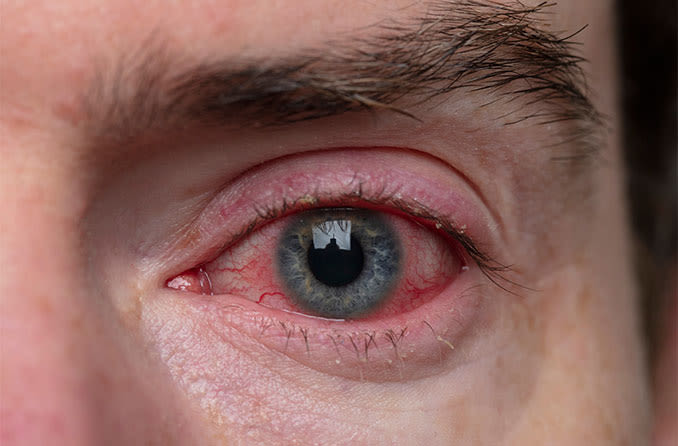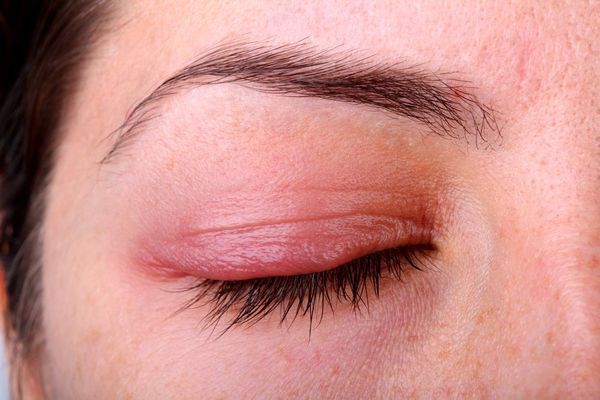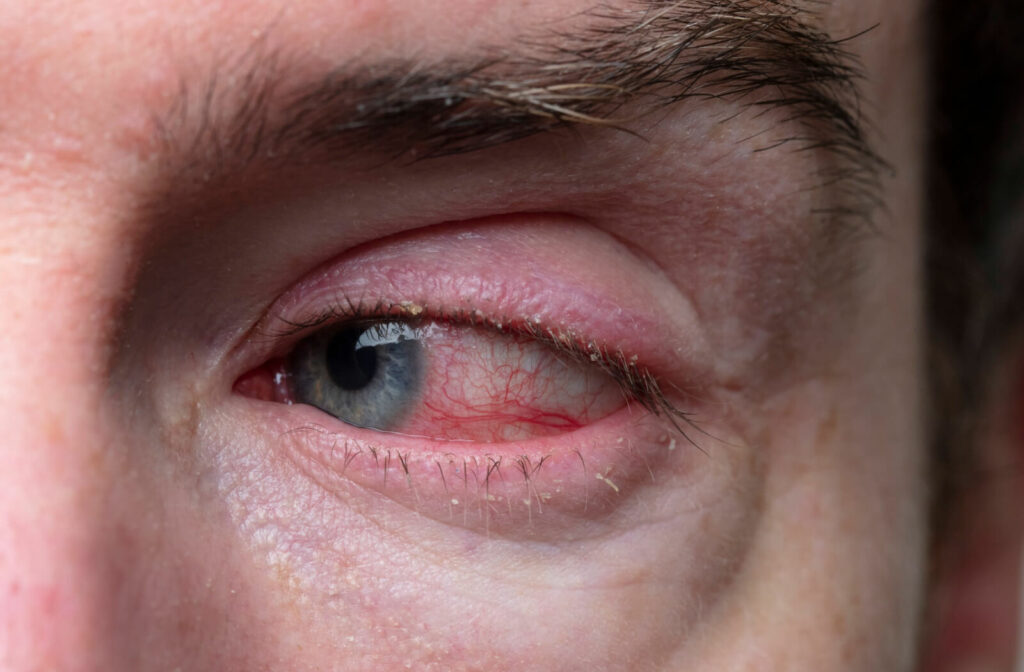Eyelash extensions are a popular beauty treatment that adds length and fullness to natural eyelashes. But did you know that lash extensions can also cause blepharitis? Blepharitis is an eye disease caused by inflammation of the eyelids, which can lead to redness, itchiness, dry eyes and even loss of vision if not treated properly. In this article we will explore what blepharitis is, common symptoms of the condition and how it relates to eyelash extensions. We’ll also discuss treatments for blepharitis from lash extensions as well as tips for prevention.
What is Blepharitis?
Blepharitis is an eye condition caused by inflammation of the eyelids. It affects both upper and lower lids, but more often than not it occurs on both sides at once. The most common causes are bacterial or fungal infections or allergies to certain products such as makeup or contact lenses. It can also be caused by skin conditions such as rosacea or eczema, overactive oil glands in the lashes, dry eyes due to environmental factors like air pollution or dust particles in the air, and demodex mites living on your lashes or skin around your eyes (also known as “lash mites”).
The main symptom of blepharitis is redness around the base of your lashes and along your lid margins – although this isn’t always present with all cases – followed by irritation (such as stinging or burning), itchiness, flaking skin around your eyes, crusting along your lash line and sometimes swelling too. Other associated symptoms may include blurred vision (due to a build-up of oils) watery eyes from blocked tear ducts and feeling like there’s something in your eye even when there isn’t (known as foreign body sensation).
Common Symptoms of Blepharitis
The most common symptoms associated with blepharitis include:
- Redness around the base of lashes/eyelid margins
- Irritation/stinging/burning sensation
- Itchiness
- Flaking skin around the eyes
- Crusting along lash line
- Swelling
- Blurred vision
- Watery eyes
- Foreign body sensation (feeling like something’s in eye)
These symptoms can vary from person to person depending on their underlying cause(s). For example someone with bacterial blepharitis may experience more intense itching than someone with demodex mites living on their lashes. Additionally those who suffer from allergies may find that their symptoms worsen during allergy season due to increased exposure to allergens in their environment.
Why Blepharitis Can Happen After Lash Extensions?
Lash extensions are attached directly onto individual natural lashes using adhesive glue made up mainly of cyanoacrylate monomers which have been shown to cause allergic reactions in some people, leading them to be prone towards developing blepharitis after getting them applied. This type of reaction usually happens within a few days after application; however, its onset could be delayed for weeks. Additionally, because these glues contain polymers, they tend to trap dirt, bacteria, fungi, dust particles, etc., inside them, resulting in an increased risk of infection and further worsening any existing cases. Lastly, lash artists who use unsterilized tools and equipment during the application process put clients at risk of developing infection-related complications, including conjunctivitis and conjunctival edema, which could eventually lead to the development of chronic form blepharitis called marginal blepharitis. Thus, it is extremely important for anyone planning to get these treatments done to make sure they go to a reputable salon using high-quality materials and well-sterilized tools before starting the procedure.
Treating Blepharitis from Eyelash Extensions
The good news is that there are several ways to treat blepharitis caused by eyelash extensions.
The first step in treating blepharitis is to remove those eyelash extensions that are causing you so much pain. This will allow the eyelids to heal and reduce the risk of further irritation. It is also important to clean the eyelids thoroughly with a gentle, non-irritating cleanser. This will help to remove any debris or makeup that may be contributing to the inflammation.
In addition to cleaning the eyelids, there are several other treatments that can be used to manage blepharitis symptoms. Warm compresses can be applied to the affected area to help soothe the skin and reduce inflammation. Over-the-counter anti-inflammatory medications, such as ibuprofen, can also be taken to reduce pain and swelling.
In some cases, prescription medications may be necessary to treat blepharitis. Antibiotic ointments or drops may be prescribed to help eliminate any bacteria that may be contributing to the inflammation. Steroid eye drops may also be prescribed to reduce inflammation and relieve symptoms.

Eyelid Wipes for Blepharitis
One of the most important steps in treating blepharitis is proper hygiene. Wiping your eyes with an appropriate antiseptic wipe every day will help remove bacteria, viruses, or mites that may be causing irritation and inflammation on your eyelids. It is important to use wipes specifically designed for use on sensitive areas like the eyes because they contain mild ingredients that won’t irritate your skin further or damage your lashes. When using these wipes, it is also important not to rub too hard as this could cause further irritation or damage to delicate eye tissue.
Cold Compress for Blepharitis
A cold compress can be used as part of a treatment plan for blepharitis caused by eyelash extensions because it helps reduce swelling and inflammation around the eyes due to bacterial or viral infections that may be present on the eyelids after extension application. To make a cold compress, you can fill a clean washcloth with ice cubes, then wrap it up tightly before placing it gently over closed eyes for 15 minutes at a time, multiple times per day until symptoms subside. This method should only be done if there are no open wounds present on the skin surrounding your eyes, as exposure to extreme temperatures could worsen existing injuries in those areas, if any are present at all.
Warm Compress for Blepharitis
In addition to using cold compresses, warm compresses can also be used to treat blepharitis caused by eyelash extensions. They help soothe irritated skin and loosen debris trapped under lashes, making it easier to wipe away with gentle cleansing agents like cotton swabs dipped in saline solution (saltwater). To make a warm compress, fill another clean washcloth with warm water, wring out any excess moisture, and place it over closed eyes for 10 minutes at a time, multiple times per day until symptoms subside.

Tips For Prevention
Finally, although proper hygiene is always essential when dealing with eye-related issues such as blepharitis caused by extension application, there are several other tips you should keep in mind when trying to prevent recurrence:
- Avoid touching or rubbing infected areas.
- Never share towels or cloths used on the face.
- Keep makeup brushes and applicators clean.
- Throw away old mascara tubes after three months.
- Avoid wearing contacts overnight.
- Use hypoallergenic cosmetics only.
- Stay away from smoky environments when possible.
- Don’t sleep face down after lash extension application.
Taking these simple precautions will help ensure healthy-looking lashes and minimize the chances of developing additional issues related to eye care going forward!
You may also be interested in these articles about eyelashes:

